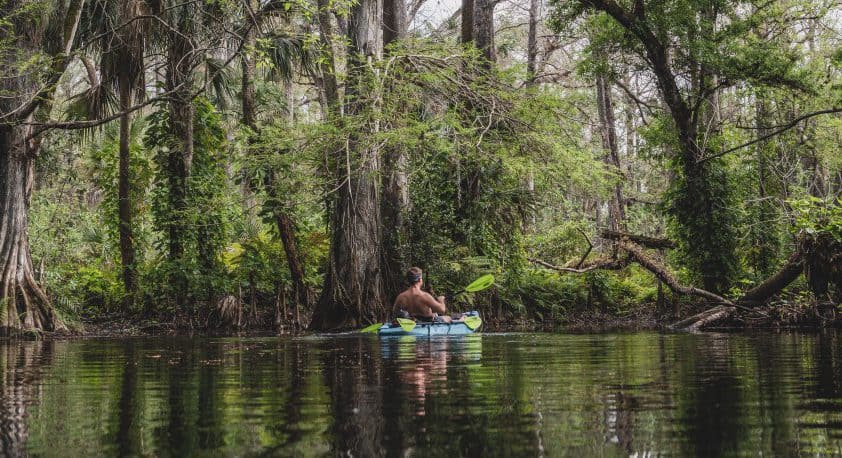In a state filled with cotton-candy amusement parks, sunburned snowbirds, and road-rage interstates, ditch the crowds—and find a personal, very socially-distanced paradise.
Think the 21+ million people who call Florida home feels like a lot? Compare that number to the 130 million or so visitors who were making the trek to Florida each year before COVID-19, and it might seem like there’s not enough of the Sunshine State to go around for everyone.
Fortunately, the state boasts as many off-the-beaten-path hidden gems as it does tourist traps—and that’s good news for visitors seeking the real Florida experience—minus the mouse ears and overly air-conditioned T-shirt shops.
Here are three must-see remote areas to hit during your next trip to Florida. (Just bring bug spray. For those who don’t know, the mosquito is the unofficial state bird in Florida.)
Marjory Stoneman Douglas Wilderness
The word “vast” comes to mind when describing the Marjory Stoneman Douglas Wilderness area, a 1.3 million-acre expanse inside Everglades National Park in South Florida. In fact, the wilderness—legally defined under the Wilderness Act of 1964 as “an area of undeveloped federal land retaining its primeval character and influence, without permanent improvements or human habitation, which is protected and managed so as to preserve its natural conditions”—is the largest of its kind, east of the Rockies.
Within the area, you can see birds, dolphins, turtles, sharks, manatees, and if you’re lucky, a Florida panther, and make sure to pack your telescope for some of the best stargazing you’ll ever come across. Certain sections of the park are open all the time, while others have schedules in place to limit visitors. Your best bet is to check in with one of the Everglades National Park visitor centers with questions about your specific itinerary.
How do you get there? How long will it take? It’s about a 90-minute drive from Miami International Airport into the Marjory Stoneman Douglas Wilderness area. However, it takes less than an hour to get into the remote beauty of the Everglades.
Bradwell Bay Wilderness
Moving from the bottom of the peninsula to the top, Bradwell Bay Wilderness is another unblemished crosshatch of pure Florida serenity. Located in the Florida panhandle within the Apalachicola National Forest, Bradwell Bay’s swampy terrain is dotted with titi trees that bloom fragrant white flowers alongside leathery green leaves.
Visitors can camp and hike the Florida National Scenic Trail, which traverses right through Bradwell Bay for some 12 miles, view wildlife like deer, black bears, and gators, and meander down the Sopchoppy River via canoe. The park is open 24-hours-a-day, so feel free to visit at your convenience. However, because the wilderness is so remote (hey, that’s what you asked for), park officials suggest checking in with the district office to inform someone of your hiking or camping plans in advance.
How do you get there? How long will it take? From Tallahassee, Florida’s state capitol, it’s about an hour drive to the southwest—deep into the heart of Apalachicola National Forest.
Juniper Prairie Wilderness
Rounding out our tour, we’re moving back toward the middle of the state and the Juniper Prairie Wilderness, the most well-known of the wilderness areas within the Ocala National Forest. While no motorized vehicles are permitted inside the wilderness, its area borders State Road-40, also known as the Florida Black Bear Scenic Byway.
Unlike some of the other wilderness areas in the state, Juniper Prairie is flush with pine flatwoods and sand pine scrubs. One thing to be mindful of here is that forest fires are prone to pop up here, so keep an eye out when hiking or camping. There is no fee to visit the park.
How do you get there? How long will it take? Juniper Prairie Wilderness is about a 90-minute drive north from Orlando.
Ready to get wild?
If the three wilderness areas included here don’t mesh with your future travel plans, you’re in luck. Florida has a total of 17 wilderness areas that range in size from Marjory Stoneman Douglas’ 1.3 million acres down to the six acres comprising Pelican Island Wilderness. The National Wilderness Preservation System has a searchable database of wildernesses throughout the state and a handy search function that makes it easy to find the right one for you.









